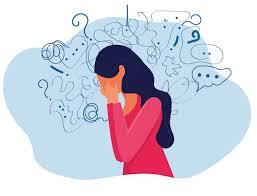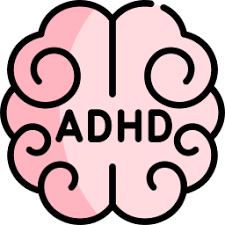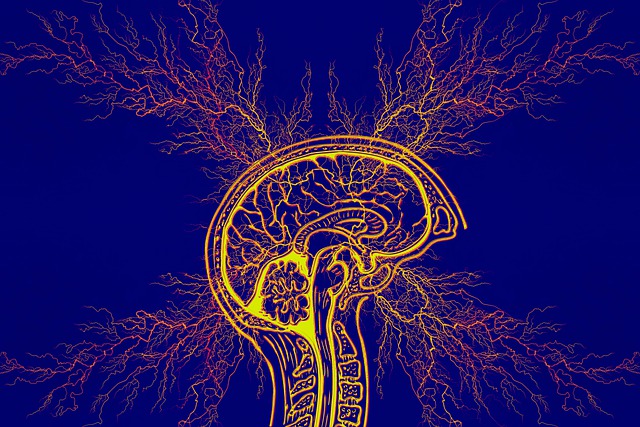The Role of Medication in Treating ADHD and Co-occurring Anxiety Disorders

Strong 8k brings an ultra-HD IPTV experience to your living room and your pocket.
Managing Attention Deficit Hyperactivity Disorder (ADHD) alongside co-occurring Anxiety Disorders presents a complex challenge. Medication can play a crucial role in addressing the symptoms of both conditions, but finding the right balance requires a nuanced approach. This article explores the role of medication in treating ADHD and co-occurring Anxiety Disorders, including the types of medications used, their benefits, potential risks, and strategies for effective management.
✍️ Learn how schools can better support students by reading our resource on ADHD classroom strategies, which include accommodations and individualized learning plans.
Overview of ADHD and Anxiety Disorders
ADHD Overview
ADHD is a neurodevelopmental disorder characterized by symptoms of inattention, hyperactivity, and impulsivity. Individuals with ADHD often struggle with organization, focus, and time management, which can impact their academic, occupational, and social functioning.
Anxiety Disorders Overview
Anxiety Disorders encompass various conditions characterized by excessive worry, fear, and avoidance behaviors. Common types include Generalized Anxiety Disorder (GAD), Social Anxiety Disorder, and Panic Disorder. Symptoms often include persistent anxiety, physical symptoms (e.g., palpitations, sweating), and avoidance of anxiety-provoking situations.
Medication for ADHD
1. Stimulants
Types and Mechanism
Methylphenidate (e.g., Ritalin, Concerta):
Methylphenidate is one of the most commonly prescribed stimulant medications for ADHD. It works by increasing the levels of neurotransmitters (dopamine and norepinephrine) in the brain, improving focus and attention.
Amphetamines (e.g., Adderall, Vyvanse):
Amphetamines also increase neurotransmitter levels but have a different mechanism of action. They can be highly effective in managing ADHD symptoms, including inattention and hyperactivity.
Benefits
Improved Attention and Focus:
Stimulants are effective in reducing the core symptoms of ADHD, such as inattention, hyperactivity, and impulsivity.
Quick Onset of Action:
These medications often work within hours, providing immediate relief from ADHD symptoms.
Risks and Side Effects
Increased Anxiety:
Stimulant medications can sometimes exacerbate anxiety symptoms. Increased jitteriness, restlessness, or nervousness may occur, particularly in individuals with co-occurring Anxiety Disorders.
Potential for Abuse:
Stimulants have a potential for misuse or dependency, particularly in individuals with a history of substance abuse.
2. Non-Stimulants
Types and Mechanism
Atomoxetine (Strattera):
Atomoxetine is a non-stimulant medication used to treat ADHD. It works by selectively inhibiting the reuptake of norepinephrine, which helps improve attention and reduce impulsivity.
Guanfacine and Clonidine:
These medications are alpha-2 adrenergic agonists that can help manage ADHD symptoms, particularly impulsivity and hyperactivity, and may also have calming effects.
Benefits
Lower Risk of Anxiety Exacerbation:
Non-stimulants may be less likely to worsen anxiety symptoms compared to stimulants, making them a suitable option for individuals with co-occurring Anxiety Disorders.
Alternative for Those with Stimulant Sensitivity:
Non-stimulants provide an alternative for individuals who do not respond well to or cannot tolerate stimulant medications.
Risks and Side Effects
Sedation and Drowsiness:
Non-stimulants can cause sedation or drowsiness, which may affect daily functioning and alertness.
Slow Onset:
These medications may take several weeks to show their full effect, which can be challenging for individuals seeking immediate symptom relief.
Medication for Anxiety Disorders
1. Selective Serotonin Reuptake Inhibitors (SSRIs)
Types and Mechanism
Fluoxetine (Prozac), Sertraline (Zoloft), and Escitalopram (Lexapro):
SSRIs are commonly prescribed for Anxiety Disorders. They work by increasing serotonin levels in the brain, which helps improve mood and reduce anxiety.
Benefits
Effective for Anxiety Symptoms:
SSRIs are well-established as effective treatments for various Anxiety Disorders, reducing excessive worry and fear.
Good Tolerability:
SSRIs generally have a favorable side effect profile and are well-tolerated by most individuals.
Risks and Side Effects
Initial Increase in Anxiety:
Some individuals may experience an increase in anxiety when first starting SSRIs. This is usually temporary and improves as the body adjusts to the medication.
Sexual Dysfunction:
SSRIs can cause sexual side effects, including decreased libido and difficulty achieving orgasm.
2. Benzodiazepines
Types and Mechanism
Diazepam (Valium), Alprazolam (Xanax):
Benzodiazepines are used for short-term management of acute anxiety symptoms. They work by enhancing the effects of the neurotransmitter GABA, producing a calming effect.
Benefits
Rapid Relief:
Benzodiazepines provide quick relief from severe anxiety symptoms and are effective for short-term use.
Risks and Side Effects
Dependence and Withdrawal:
Long-term use of benzodiazepines can lead to dependence and withdrawal symptoms. They are generally not recommended for long-term management of Anxiety Disorders.
Sedation and Impairment:
These medications can cause sedation, impair cognitive and motor functions, and increase the risk of accidents.
Integrated Medication Management
1. Balancing ADHD and Anxiety Treatment
Medication Interactions
Monitoring and Adjustments:
Managing ADHD and Anxiety with medication requires careful monitoring of interactions and side effects. Adjustments may be needed to balance the treatment of both conditions effectively.
Combination Therapy:
In some cases, a combination of ADHD and Anxiety medications may be necessary. For example, a stimulant or non-stimulant for ADHD may be paired with an SSRI for Anxiety, with close monitoring to manage potential interactions.
2. Collaborative Approach
Healthcare Provider Coordination
Multidisciplinary Team:
Working with a multidisciplinary team, including psychiatrists, psychologists, and primary care providers, ensures a coordinated approach to managing both ADHD and Anxiety.
Regular Follow-ups:
Regular follow-up appointments are essential for assessing the effectiveness of medications, adjusting dosages, and addressing any emerging concerns.
3. Non-Medication Strategies
Complementary Therapies
Cognitive Behavioral Therapy (CBT):
CBT is effective for both ADHD and Anxiety. It helps individuals develop coping strategies, improve emotional regulation, and address negative thought patterns.
Behavioral Interventions:
For ADHD, behavioral interventions such as organizational skills training and time management can complement medication treatment.
Conclusion
Medication plays a crucial role in treating ADHD and co-occurring Anxiety Disorders, but it requires a careful, integrated approach. Stimulants and non-stimulants are used for ADHD, while SSRIs and benzodiazepines address Anxiety Disorders. Effective management involves balancing the medications to address both conditions while monitoring for side effects and interactions. A collaborative approach with healthcare providers, combined with complementary therapies and lifestyle modifications, can lead to improved outcomes and a better quality of life for individuals managing ADHD and Anxiety.
Note: IndiBlogHub features both user-submitted and editorial content. We do not verify third-party contributions. Read our Disclaimer and Privacy Policyfor details.







